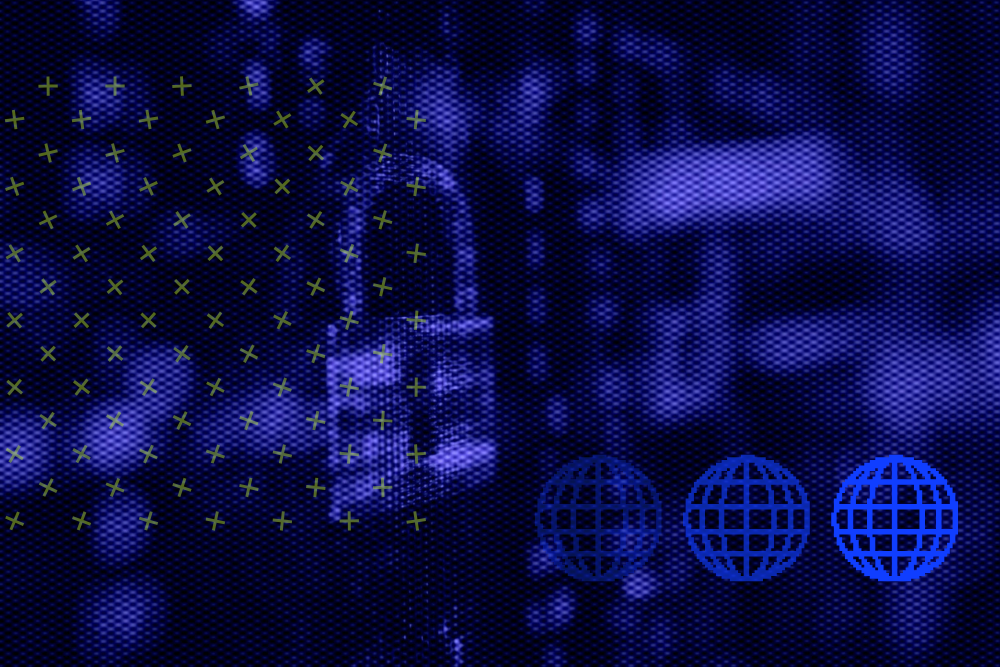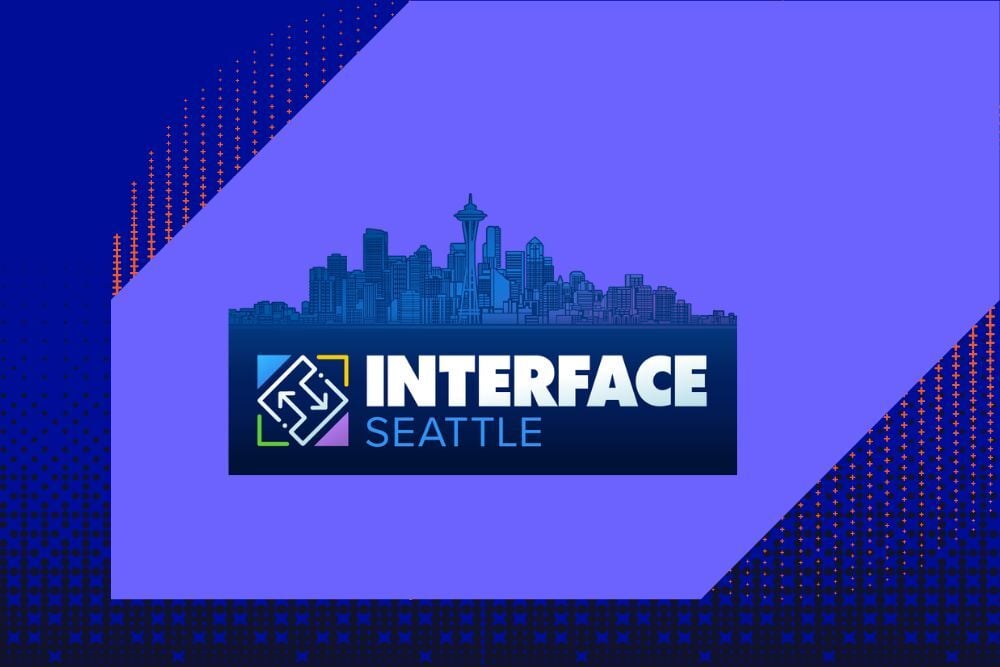As a business leader, your voice is your authority. Your personal presence is your proof. What happens when both can be perfectly replicated by an adversary?
We are no longer in the realm of science fiction. The line between human and artificial interaction has been breached. For years, we trained our teams to spot the "obvious" fake emails—the misspelled emails, the grainy photos, the awkward phrasing. But AI-driven deepfakes have rendered that entire playbook nearly obsolete.
This is not a Hollywood problem or a "big enterprise" issue. This is a small and mid-sized business problem that strikes at the heart of your operations: financial controls.
Cyber criminals are now using AI-generated audio and video to impersonate senior leadership with terrifying accuracy. Their goal is simple: to exploit the trust you’ve built with your team to authorize fraudulent wire transfers, steal sensitive data, and commit executive impersonation fraud.
As a senior vCISO at CompassMSP, I advise executive teams daily. The most critical shift in my guidance over the past year has been this: We must move our security posture from awareness to resilience. Awareness fails when the fake is perfect. Resilience succeeds because it assumes the fake will get through and builds a framework of authentication that stops it cold.
This is not a future problem. The identity fraud platform Sumsub, in their 2023 annual report, noted a staggering 1,740% increase in deepfake incidents in North America alone. The primary attack vector for financial fraud has already merged with deepfake technology.
This article is not a technical deep-dive. It is a strategic, executive-level breakdown of the new threat landscape, designed specifically for a business leader's perspective.
The New Attack Vector: How Deepfakes Weaponize Trust
The Primary Target: Executive Impersonation Fraud
The Secondary Target: Reputational and Stock Manipulation
The Governance Gap: Why Your Current Security Fails
The Failure of "Trust, But Verify"
The Limits of Technical-Only Solutions
Business Email Compromise (BEC) Meets Deepfakes: The "Super-Weapon"
4 Steps to Building Resilience: A Strategic Framework for CEOs
The CompassMSP Advantage: From Reactive to Resilient
Frequently Asked Questions About AI Deepfake Business Threats
The New Attack Vector: How Deepfakes Weaponize Trust
To understand the threat, you must understand the target. The target is not your firewall. The target is the human trust that your entire command-and-control structure is built on.
A deepfake, whether voice or video, is simply a tool to make classic social engineering tactics lethally effective.
From Phishing to "V-AI-shing": The Evolution of Fraud
For the last decade, the primary threat has been Business Email Compromise (BEC). This is when an attacker spoofs or compromises a C-level email account to send a fraudulent request, typically "urgent," to an employee in finance.
- Phase 1: Phishing (Email): Relied on a text-based email. Our defense was to "check the sender's email address" or "look for grammar mistakes."
- Phase 2: Vishing (Voice): Attackers used phone calls. Our defense was "Does that sound like the CEO?" Human impersonators were often easy to spot.
- Phase 3: Deepfake (AI Voice/Video): This is the new phase. An attacker can now clone a leader's voice from just a few seconds of audio from a podcast or "all-hands" video. Security researchers at McAfee have confirmed that as little as three seconds of audio is enough to produce a convincing clone. The FBI has followed this with formal public service announcements, warning that malicious actors are actively using AI-generated audio to "impersonate...public figures or personal relations to increase the believability of their schemes."
The Primary Target: Executive Impersonation Fraud
The "CEO Fraud" is the classic BEC attack. The deepfake makes it exponentially more dangerous.
Consider this scenario:
- Reconnaissance: An attacker compromises a low-level employee's email. They don't steal anything. They just watch. They learn your org chart, see when you're traveling (via your calendar), and identify who in finance handles wires. They find a recording of your voice online.
- Execution: The CFO receives a call. It's you. The voice is identical. "I'm tied up, about to board a plane, and I need you to handle an urgent, confidential M&A payment. I'm sending the wire details to your personal email to maintain discretion. This has to be done now."
- The Result: The CFO, facing immense pressure and hearing your exact voice, feels compelled to act. They bypass the normal multi-step verification to be a "problem solver." The money is gone in minutes.
The Secondary Target: Reputational and Stock Manipulation
While financial fraud is the most common goal for small and mid-sized businesses, the technology also allows for sophisticated reputational attacks. An attacker could create a deepfake video of you announcing a massive product recall, a data breach, or sudden bankruptcy.
Posted to social media, this video could trigger a panic among your clients, partners, and investors before you even have a chance to issue a takedown. The damage to your brand's integrity, even if the video is later proven false, can be catastrophic.
CASE IN POINT
The $25 Million Mistake
Take this real-world example from 2024. A finance worker at a multinational firm in Hong Kong was tricked into paying out $25.6 million after attending a video conference call with his CFO and other senior leaders.
The problem? Every single person on that call, except the victim, was an AI-driven deepfake.
The Multi-Person Deepfake Video Conference
According to reports from authorities, the attack was profoundly sophisticated.
- The victim initially received a standard phishing email, supposedly from the UK-based CFO, about a secret transaction.
- The employee was skeptical. To "prove" the request was real, the attackers invited him to a full video conference call.
- On the call were several individuals the victim recognized as senior executives. They looked, moved, and sounded just like his colleagues.
- They discussed the transaction and instructed him to proceed with the payment.
- Believing he had just received face-to-face verification from his entire leadership team, the employee processed 15 transfers totaling over $25 million.
Wondering what a ransomware attack might cost your business? Check out our cybersecurity calculator for a free estimate.
Why Existing Controls Failed
This attack represents a quantum leap in cybercrime. It demonstrates that our long-held "trust, but verify" models are broken.
- Verification by Voice? Defeated by AI voice cloning.
- Verification by Video? Defeated by AI video avatars.
- Verification by Group Consensus? Defeated by multi-person deepfakes.
The victim in this attack thought he was being diligent by getting visual confirmation. But the attackers simply turned his verification step into the final stage of their attack.
The Governance Gap: Why Your Current Security Fails
This is the central point I stress with every CEO: The deepfake threat is not an IT problem to be solved; it is a governance gap to be closed.
Your vulnerability isn't in your firewall; it's in your payment authorization policies.
The Failure of "Trust, But Verify"
The old model assumed "trust" as the baseline and "verify" as the exception. When an employee receives an "urgent" request from a leader, the path of least resistance is to comply.
The new model must be "Never Trust, Always Authenticate."
This is a Zero-Trust principle applied to human-to-human interaction. We must re-engineer our processes to assume any request for money or data, regardless of its apparent source, is fraudulent until proven otherwise through an out-of-band, pre-established authentication channel.
The Limits of Technical-Only Solutions
You cannot buy a single software tool that "stops deepfakes." An email filter can't stop a deepfake voice scam on your CFO's personal cell phone. A standard firewall is useless against an attacker who has cloned your identity from a public YouTube video.
This threat bypasses traditional technical defenses and targets your people, policies, and procedures.
Business Email Compromise (BEC) Meets Deepfakes: The "Super-Weapon"
The deepfake is the "super-weapon" that makes existing attack methods unstoppable. These two threats are no longer separate; they have merged.
The deepfake is the "super-weapon" that makes existing attack methods unstoppable. These two threats are no longer separate; they have merged.
Consider these two data points:
1. The Attack: The FBI's 2023 Internet Crime Report stated that BEC schemes resulted in over $2.9 billion in adjusted losses in 2023.
2. The Method: Concurrently, deepfake-driven fraud is exploding. Sumsub's 2023 fraud report identified a 10x global increase in deepfake incidents, with North America being the most targeted region.
The $2.9 billion problem is now being actively supercharged by convincing, AI-driven impersonation. This is why the $25 million Hong Kong attack is not an outlier; it is the new template.
4 Steps to Building Resilience: A Strategic Framework for CEOs
As a CEO, you must lead the charge in building resilience. This is a top-down mandate that redefines your company's relationship with trust and money.
Step 1: Establish Cybersecurity Governance (The Top-Down Mandate)
Your first move is policy. You must establish an iron-clad, non-negotiable Cybersecurity Governance framework, including an AI Security policy for all financial disbursements and sensitive data access.
This framework must explicitly state:
- No "Urgency" Exceptions: All financial transfer requests, regardless of who they come from or how urgent they seem, must follow the complete authentication process.
- Zero-Tolerance for Bypassing: Empower your team to reject requests that do not follow the process, even if they appear to come from you. Your CFO must be praised for telling a "deepfake you" no, not reprimanded for "slowing things down."
Step 2: Implement Multi-Channel, Out-of-Band Authentication
This is your single most effective technical defense.
- "Out-of-Band" means using a different communication channel than the one the request came in on. If a request comes via email, verification cannot be a reply email.
- "Multi-Channel" means combining them.
Your New Policy: Any request for a wire transfer, ACH change, or access to sensitive systems must be verified through at least two channels.
- The Request: An email comes in.
- The Verification: The employee must initiate a separate This could be a callback to a pre-registered, on-file phone number (not one from the email), an approval request via a secure secondary platform (like Microsoft Teams, Slack, or a bill-pay portal), or a verbal confirmation using a pre-established "safe word" or "passphrase."
This simple process stop 99% of all attacks. The deepfake attacker can spoof your voice, but they can't answer the real you's cell phone or approve the request in your secure portal.
Step 3: Train Beyond Awareness: The "Zero-Trust" Mindset
Stop training employees to "spot the fake." You will lose that game. Instead, train them to "follow the process."
Your new security training should be:
- "We don't spot fakes; we follow the payment authentication process every single time."
- "You are empowered to deny any request that shortcuts this process. You will be celebrated for it."
- "If you receive an urgent call from an executive, your only response is: 'Understood. I will initiate the transfer and call you back on your registered number for final authentication.'"
Step 4: Leverage Advanced Threat Detection (The 24/7 SOC)
The deepfake call is the last step of an attack, not the first. Long before that call, the attacker was likely "living" in your network—in a compromised email account, on a server—conducting reconnaissance. They've been reading your emails, studying your calendar, and identifying their target.
This is where a 24/7/365 U.S-based Security Operations Center (SOC) becomes critical. A SOC isn't watching for deepfakes; it's watching for the precursors. It detects the initial, suspicious login from a foreign country, the unusual email-forwarding rule, or the access to the "Finance" folder at 3:00 AM. A 24/7 SOC stops the attack during the reconnaissance phase, before the deepfake is ever deployed.
The CompassMSP Advantage: From Reactive to Resilient
As a CEO, you shouldn't be building this framework alone. Your focus is running your business. Our focus is protecting it. This is where a strategic partner moves you from a reactive, vulnerable state to a proactive, resilient one.
vCISO Advisory: Your Partner in Governance
My team and I function as a vCISO (virtual Chief Information Security Officer) for our clients. We don't just sell you software. We sit with your leadership team to build the governance framework I just described.
A vCISO aligns your security strategy with your specific business goals and risk tolerance. We help you write the payment policies, design the multi-channel authentication workflows, and build the "Zero-Trust" training program. This is the executive-level guidance that closes your governance gap.
24/7 SOC Monitoring: Detecting the Attack Before the Call
Our Cybersecurity & Advisory services are built on our 24/7/365 U.S.-based SOC. Our security analysts use AI-driven tools to monitor your entire IT ecosystem—endpoints, cloud apps, network—around the clock.
When an attacker's first "scout" (malware, compromised credential) breaches your perimeter, we detect it and neutralize it in real-time. We stop the attack before it becomes a $25 million phone call.
Digital Forensics & Incident Response
In a worst-case scenario, you need a partner with a plan. If you suspect a breach or an attack, our Digital Forensics & Incident Response (DFIR) team is activated. We investigate fast, preserve evidence, analyze the root cause, and provide the regulator- and insurer-ready reports you need to manage the fallout with confidence.
The CEO's Call to Action
The threat is here, it is real, and it is aimed directly at your treasury. AI deepfake business threats have transformed executive impersonation from a clumsy email scam into a sophisticated, highly convincing attack on your company's financial core.
The solution is not a product; it's a program. It starts with governance and is enforced by a 24/7, human-led security operation.
Don't wait to become a case study. Take the first step and let's have a strategic conversation about your true risk exposure.
Frequently Asked Questions About AI Deepfake Business Threats
Q: What exactly is an AI deepfake?
An AI deepfake is a piece of digital media (audio or video) that has been created or altered using artificial intelligence to replace one person's likeness or voice with that of another. The technology has become so advanced that it can realistically simulate a specific person's voice, face, and mannerisms, making it extremely difficult to detect with the naked eye or ear.
Q: How are deepfakes used against businesses?
The most common and dangerous use is for executive impersonation fraud. An attacker will use a deepfake—most often a "deepfake voice scam"—to impersonate a CEO, CFO, or other executive. They then contact an employee in the finance or HR department with an "urgent" and "confidential" request, such as processing an emergency wire transfer or changing payroll bank details.
Q: Aren't AI deepfakes easy to spot?
No, this is a dangerous misconception. While early video deepfakes had visual glitches (like odd blinking), the technology has advanced. More importantly, audio deepfakes are now nearly perfect and require very little source data to clone a voice. A 30-second clip from a public interview or company video is often enough. These audio fakes, delivered over a phone, are convincing.
Q: What is a deepfake voice scam?
This is an attack, also known as "V-AI-shing" (AI Voice Phishing), where an attacker uses an AI-cloned voice to call an employee. They will impersonate a trusted figure of authority (like the CEO) to manipulate the employee into bypassing security controls. The "urgency" of a live call, combined with the seemingly authentic voice, creates a high-pressure situation that leads to mistakes.
Q: What is executive impersonation fraud?
This is a type of Business Email Compromise (BEC) attack where the fraudster impersonates a senior leader. Historically, this was done with a spoofed email. Today, attackers combine the spoofed email with a follow-up deepfake voice or video call to "verify" the request, making it far more likely to succeed and resulting in significant financial loss.
Q: How can I protect my company from deepfakes?
You must shift from "awareness" to "process." The only way to defend your company is to create and enforce a rigid cybersecurity governance framework that assumes all requests are untrusted. This includes implementing mandatory out-of-band, multi-factor authentication for all financial transfers, regardless of the source or urgency.
Q: What is cybersecurity governance?
Cybersecurity governance is the set of policies, procedures, and responsibilities established by a company's leadership (the CEO, Board, and senior executives) to manage and mitigate cybersecurity risks. It's the top-down strategy that defines what is important to protect, who is responsible, and what the non-negotiable rules are for handling data and money.
Q: What is a vCISO?
A vCISO, or virtual Chief Information Security Officer, is an executive-level security expert who provides strategic leadership and advisory services to a business on a fractional or part-time basis. For SMBs, a vCISO (like the advisory services provided by CompassMSP) is the most effective way to gain the governance-level expertise needed to build a modern security program without the cost of a full-time executive hire.
Q: How does a 24/7 SOC help prevent deepfake fraud?
A deepfake attack is the final step. The attacker must first conduct reconnaissance, which almost always involves an initial breach (like a compromised email account). A 24/7 Security Operations Center (SOC) provides managed detection and response (MDR), identifying and stopping that initial breach in its tracks, often days or weeks before the attacker is ready to launch their deepfake scam.
Q: What is Business Email Compromise (BEC)?
Business Email Compromise (BEC) is a sophisticated scam that targets businesses by spoofing or gaining illegal access to a legitimate business email account. The attacker then uses this trusted identity to trick an employee, partner, or client into making a fraudulent wire transfer or sending sensitive data. Deepfakes are the new, powerful tool being used to make these BEC attacks more convincing.








